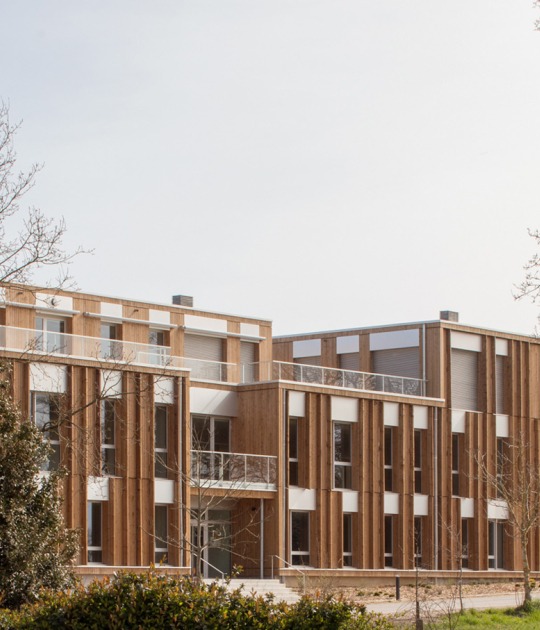The project supports the idea of healing through nature, sunlight, and connection, putting patients' needs first. In addition, it is organized into "neighborhoods" that unite services around patient needs and specific diseases, creating environments that serve as homes full of light and with views of the city.

Mayo Clinic Campus & Hospital of the Future by Foster + Partners and CannonDesign. Courtesy of Foster + Partners.
Project description by Foster + Partners and CannonDesign
Foster + Partners, CannonDesign and Gilbane Building Company have collaborated with Mayo Clinic to realize a revolutionary new vision for healthcare.
The project — referred to as Bold. Forward. Unbound. in Rochester — is a multiyear strategic initiative that advances Mayo Clinic’s organization-wide strategy to Cure, Connect and Transform healthcare for the benefit of patients everywhere. The initiative reimagines Mayo Clinic’s Rochester, Minnesota campus and introduces new facilities that combine innovative care concepts and digital technologies to transform the patient experience, advance more cures and improve outcomes. It seeks to achieve true, seamless integration of physical spaces and digital capabilities to advance clinician teamwork and meet patients’ unmet and evolving needs.
A large part of the project encompasses two new clinical buildings at the center of the downtown campus of Mayo Clinic in Rochester. Located on the sites of the current Ozmun complex and Damon Ramp, two nine-story buildings will reach a height of 221 feet, with the potential to expand to 420 feet over time. The design creates a new central point of arrival, with the north and south drop-offs converging at a unified main entrance. This level extends the existing Gonda Lobby into the new facilities, simplifying wayfinding and creating a welcoming environment from the moment of arrival.
Above this central point of arrival, a skybridge horizontally links the two new buildings with the existing Gonda Building, allowing Mayo Clinic’s multidisciplinary care teams to connect effectively across the site. The skybridge is an integral part of a double-height social amenity level, which provides patients and their loved ones with space to rest, connect and recharge. This level is clearly evident on the building’s façade, making it easy to locate from any part of the campus.

Mayo Clinic Campus & Hospital of the Future by Foster + Partners and CannonDesign. Courtesy of Foster + Partners.
Unique architectural elements and spaces will support hope and healing through nature, sunlight and connection. Designing through the lens of Mayo Clinic’s primary value, “The needs of the patient come first,” the design transforms access to the spectrum of patient services —from labs and imaging to consultations and treatments — by creating adjacencies in dynamic care “neighborhoods” which will both streamline the patient experience and better support Mayo Clinic’s collaborative model of care. These community-centered neighborhoods will unite services around patient needs and specific diseases, creating continuous care environments that will serve as patients’ homes while at Mayo Clinic.
Double-height winter gardens are located at the center of these care neighborhoods, uniting them and providing light-filled spaces with spectacular views of the city. The atriums are both social and functional, providing opportunities for new forms of respite and healing or collaboration and care.
A universal grid along with generous floor-to-floor heights will allow clinical spaces to change over time and respond as healthcare at the Mayo Clinic continues to evolve. Care environments will be served behind the scenes by highly flexible technological infrastructure containing mechanical, data and robotic delivery systems that support pioneering treatments while allowing prioritization of human connections. The seamless integration of digital capabilities blurs traditional distinctions between inpatient, outpatient, and virtual care to support patients throughout their healthcare journey.
The project seeks to enhance the care experience in its entirety – encompassing the needs of patients, loved ones and staff and to serve as a new model for future generations.





























